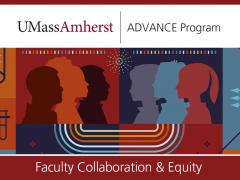People’s confidence in the government’s approval of a safe and effective COVID-19 vaccine is the main driver of vaccine adoption, according to an Australian study.
Second on the list of motivations identified in the study is the perceived effectiveness of the vaccine in protecting others in the community.
The other two most common factors of vaccine hesitancy were found to be ‘parasitism’, where individuals believe that they may benefit from having other people get vaccinated without being immunized themselves, and conspiracy beliefs about vaccination, capturing “anti-vaccine” attitudes.
The study, conducted by researchers at the Center for Business Intelligence & Data Analytics at the University of Technology Sydney (UTS), sampled more than 4,300 respondents in Australia, New Zealand, United States, Canada and the UK, and found 11 factors were catalysts or barriers to COVID-19 vaccination.
“This study offers strong prospects for improving immunization coverage, with the challenge of implementing one of the most significant immunization programs in human history,†said Associate Professor Paul Burke, Deputy Director from the Center for Business Intelligence & Data Analytics at UTS Business School.
“While the development of effective vaccine offerings is essential, unless people are vaccinated, these programs will not be successful. This study tells us who and why to encourage greater adoption. “
Overall, 66% of those polled agreed that they would be vaccinated against COVID-19. Australians had the highest intention rates (73%), followed by Canada (66%), the United Kingdom (64%), New Zealand (62%) and the United States (55%) ).
At the bottom of the list of vaccination drivers were the concerns of individuals about the severity of COVID-19 if caught and the likelihood of them becoming infected, although both were important in explaining the reluctance to be infected. vaccination.
Many factors lead to reluctance to vaccinate. Using the Health Beliefs Model as a starting point, we examined a number of factors related to the perceived threat of the disease based on the benefits and risks of vaccination. What was interesting was that we also explained how people rated these risks for themselves, but also for others in their community.
Associate Professor Paul Burke, Assistant Director, Center for Business Intelligence & Data Analytics at UTS Business School
The model controlled for individual differences such as age, income and sex, as well as the general health status of the individual.
People with lower vaccination intentions rates were more likely to be younger or unemployed, but were not looking for work. Higher rates of COVID-19 vaccination have been identified among the elderly, the unemployed looking for work and those who had previously been vaccinated against the flu. People who had more altruistic and collectivistic beliefs were also significantly more likely to be vaccinated.
Drivers of COVID-19 vaccination intentions (largest to smallest)
- Confidence in government approval of a safe and effective COVID-19 vaccine (+)
- Perceived effectiveness of COVID-19 vaccination for others (+)
- Perceived freeride ability (-)
- Conspiracy beliefs about vaccination (-)
- Perceived side effects of the COVID-19 vaccine (+)
- Perceived effectiveness of COVID-19 vaccination for the individual (+)
- Perceived availability of the COVID-19 vaccine (+)
- Perceived severity of the disease for others (+)
- Perceived susceptibility to COVID-19 for others (+)
- Perceived severity of the disease for the individual (+)
- Perceived susceptibility to COVID-19 for the individual (+)
The study, Enablers and Obstacles to COVID-19 Vaccine Adoption: An International Study of Perceptions and Intentions, is published in the journal Vaccine.
Source:
Journal reference:
Burke, PF, et al. (2021) Facilitators and Obstacles to COVID-19 Vaccine Adoption: An International Study of Perceptions and Intentions. Vaccine. doi.org/10.1016/j.vaccine.2021.07.056.
 Xing Wu
Xing Wu



